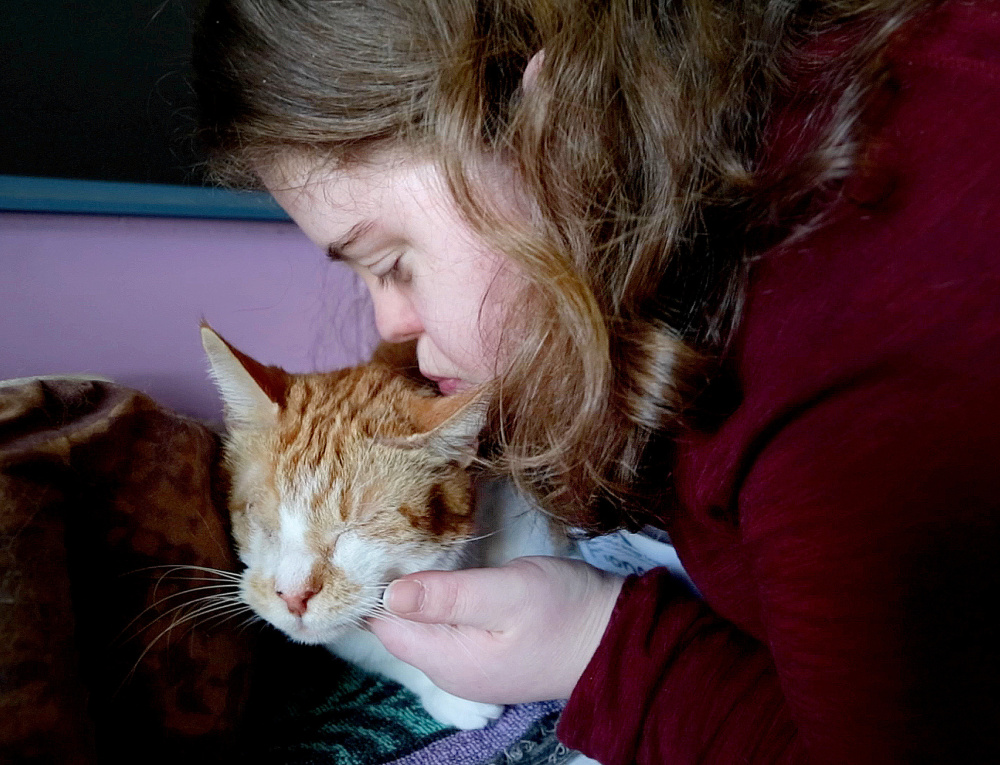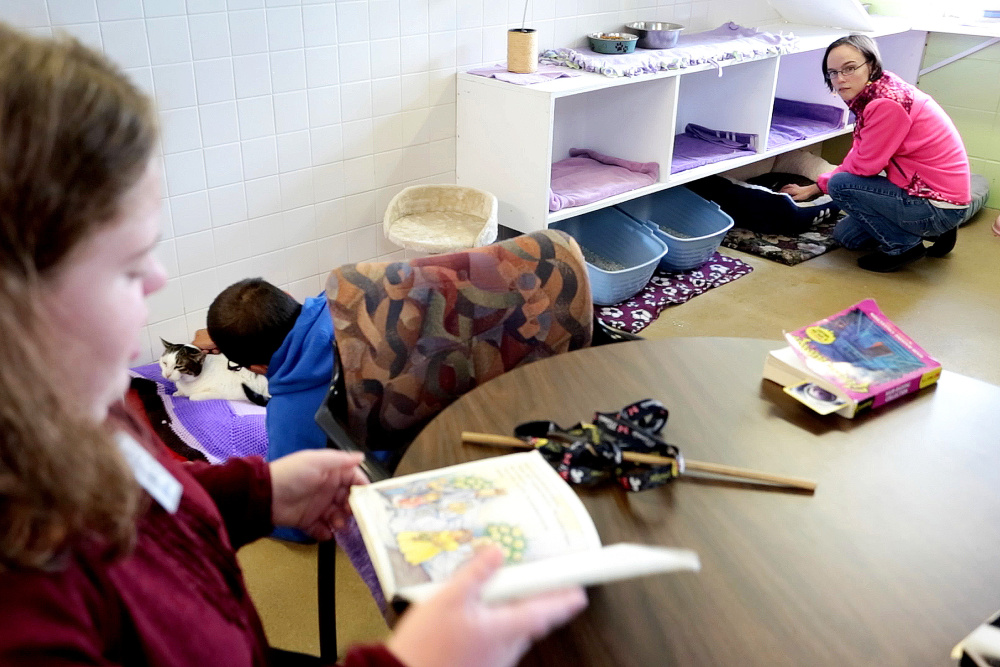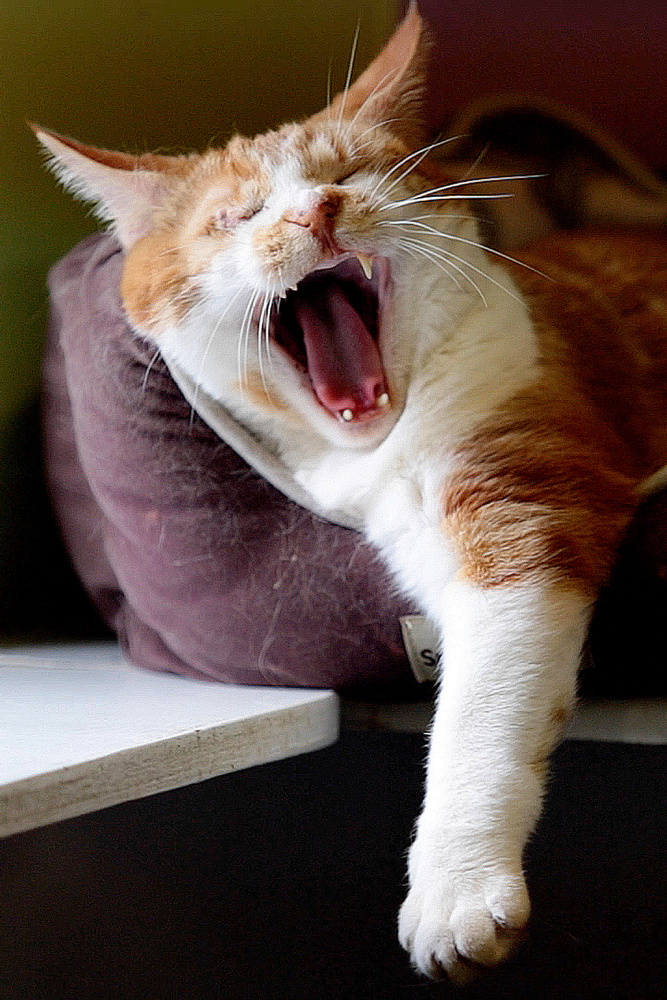Fiona Shea leans over a cat bed at the Animal Refuge League of Greater Portland and strokes the head of 8-year-old Dylan, careful to avoid the spot where his right eye used to be.
An orange-and-white tabby, Dylan purrs loudly enough to be heard halfway across the shelter’s multi-cat room – an open space where the animals are allowed to roam free.
“You’re so adorable, little kitty,” Shea, 21, whispers in his ear.
Moments later, she picks up the book she brought with her to the Westbrook shelter –”D.W. Thinks Big”– sits down at a small table and begins to read out loud to Dylan and the other cats in the room, many of whom keep a watchful eye from cubbyholes.
For Shea, participating in the Animal Refuge League’s Wednesday afternoon Reading to Cats program is a highlight of the week.
“Sometimes what I like the most is to see the cats and pet them a little and see what’s new in the room,” says Shea, who has Down syndrome.
This past spring, the Animal Refuge League partnered with STRIVE – an organization that provides services and recreational opportunities for young people with developmental disabilities – to create the reading program.
The participants are all members of STRIVE’s Next Step, which focuses on enhancing independent living skills.
“STRIVE actually approached us with the idea of (them) volunteering here,” says Jeana Roth, the Animal Refuge League’s community relations manager. “And we thought, ‘What if they work with our cats?’ It serves a need, and the cats benefit greatly from it.”
Most of the cats in the multi-cat room have special needs: medical issues, behavior problems, old age. They’ve been waiting for a home longer than any other animals in the shelter. Many are also shy and withdrawn. But that shyness usually fades away when their weekly visitors settle in with a good book.
“When the students come in and they take a seat and they begin to read, it’s an engagement with the cats that they don’t typically have here,” Roth says. “We often see them climb out of their hiding holes and their cubbies.”
While the cats are getting some much-needed socialization – which betters their chance of being adopted – the young people from STRIVE have an opportunity to hone their literacy skills.
That’s the part Jacob Lessard likes best.
“If there’s people around looking at me I get nervous…I get really shy and my cheeks all go red,” says Lessard, 24.
But reading to Dylan and company, that’s a different story.
“Cats are very quiet,” he says. “And I won’t be afraid reading to them.”
Haley Pass likes the fact that the cats are all ears.
“They listen well,” says Pass, 23, who brought the book “Twilight” to read. “And they don’t judge you if you mess up on a word.”
And that, says Kate Lord, the team leader of STRIVE’s Next Step program, builds confidence.
“I see an improvement in the way that they’re reading, almost like their confidence coming out,” Lord says.
But even more important is the knowledge that in volunteering their time, these young people are making a contribution.
“It makes me feel good,” says Pass, “because then (the cats) get some skills for when people come to see them.”
That sense of accomplishment, says STRIVE’s program director, Betsy Morrison, is the biggest reward.
“It gives (the STRIVE participants) an opportunity to give back to the community,” Morrison says. “Sometimes they feel like they take and take as recipients of services. For any of us it’s wonderful for our self-esteem to give back. And it’s no different for these young people.”
Send questions/comments to the editors.





Comments are no longer available on this story